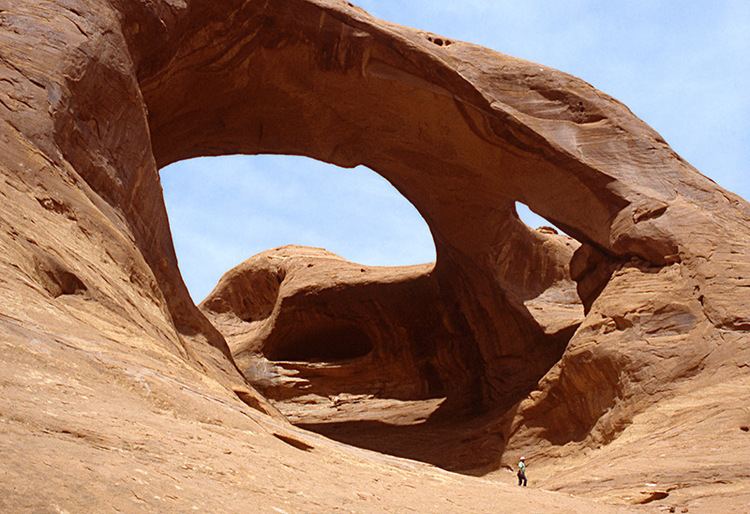 | ||
A natural arch, natural bridge or, less commonly, a rock arch is a natural rock formation where an arch has formed with an opening underneath. Natural arches commonly form where inland cliffs, coastal cliffs, fins or stacks are subject to erosion from the sea, rivers or weathering (subaerial processes).
Contents
- Springbrook natural arch gold coast hinterland
- Coastline
- Weather eroded arches
- Water eroded arches
- Cave erosion
- Arches as highway or railway bridges
- Africa
- Asia
- Europe
- Canada
- Caribbean
- Mexico
- United States
- Oceania
- South America
- Other
- References
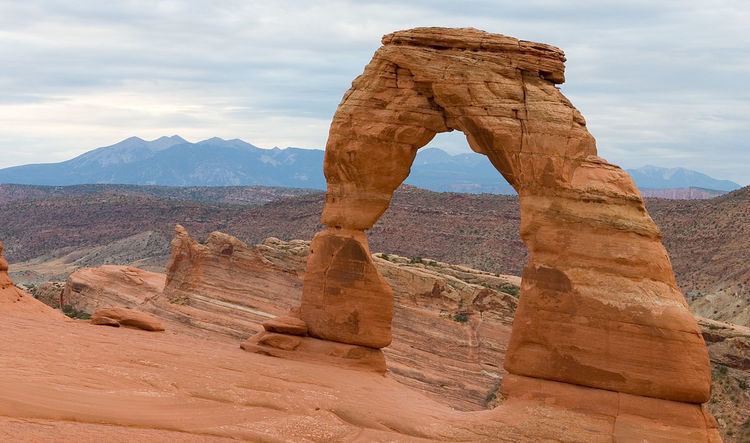
Most natural arches are formed from narrow fins and sea stacks composed of sandstone or limestone with steep, often vertical, cliff faces. The formations become narrower due to erosion over geologic time scales. The softer rock stratum erodes away creating rock shelters, or alcoves, on opposite sides of the formation beneath the relatively harder stratum, or caprock, above it. The alcoves erode further into the formation eventually meeting underneath the harder caprock layer, thus creating an arch. The erosional processes exploit weaknesses in the softer rock layers making cracks larger and removing material more quickly than the caprock; however, the caprock itself continues to erode after an arch has formed, which will ultimately lead to collapse.

The choice between bridge and arch is somewhat arbitrary. The Natural Arch and Bridge Society identifies a bridge as a subtype of arch that is primarily water-formed. By contrast, the Dictionary of Geological Terms defines a natural bridge as a "natural arch that spans a valley of erosion."
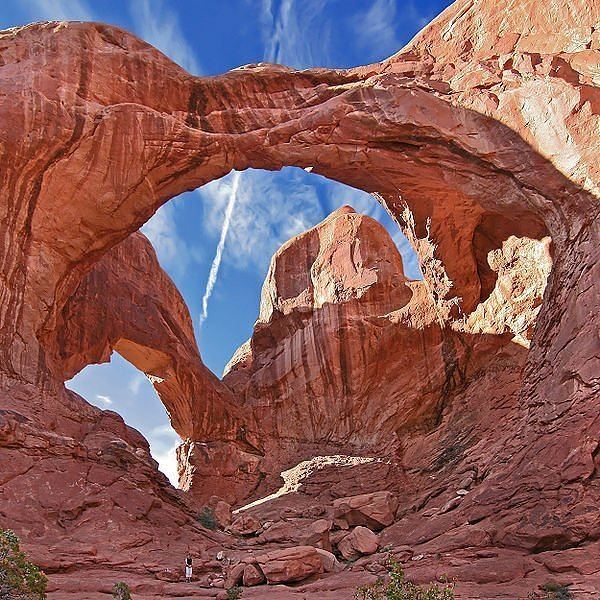
The largest natural arch, by a significant margin, is the Xianren Bridge in China, with a span of 122 ± 5 meters (400 ± 15 ft).
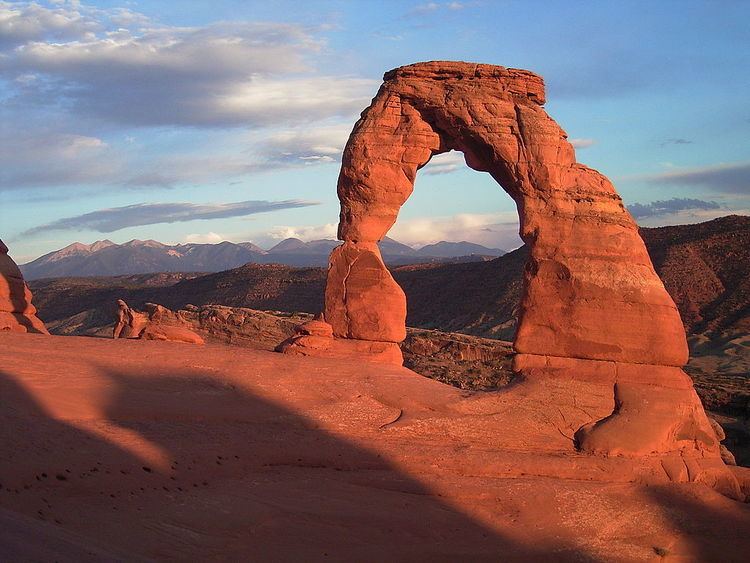
Springbrook natural arch gold coast hinterland
Coastline

On coasts two different types of arches can form depending on the geology. On discordant coastlines rock types run at 90° to the coast. Wave refraction concentrates the wave energy on the headland, and an arch forms when caves break through the headland. Two examples of this type of arch are London Arch—previously known as London Bridge—in Victoria, Australia, and Neil Island in Andaman, India. When these arches eventually collapse, they form stacks and stumps. On concordant coastlines rock types run parallel to the coastline, with weak rock such as shale protected by stronger rock such as limestone. The wave action along concordant coastlines breaks through the strong rock and then erodes the weak rock very quickly. Good examples of this type of arch are the Durdle Door and Stair Hole near Lulworth Cove on Dorset's Jurassic Coast in south England. When Stair Hole eventually collapses it will form a cove.
Weather-eroded arches
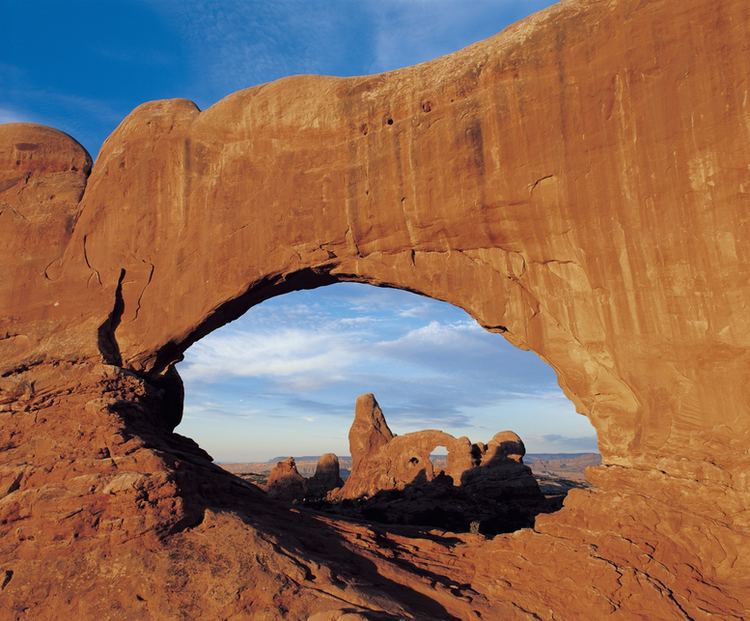
Weather-eroded arches begin their formation as deep cracks which penetrate into a sandstone layer. Erosion occurring within the cracks wears away exposed rock layers and enlarges the surface cracks isolating narrow sandstone walls which are called fins. Alternating frosts and thawing cause crumbling and flaking of the porous sandstone and eventually cut through some of the fins. The resulting holes become enlarged to arch proportions by rockfalls and weathering. The arches eventually collapse leaving only buttresses that in time will erode.
Many weather-eroded arches are found in Arches National Park, Canyonlands National Park, and Grand Staircase-Escalante National Monument, all located in southern Utah, United States.
Water-eroded arches
Some natural bridges may look like arches, but they form in the path of streams that wear away and penetrate the rock. Pothole arches form by chemical weathering as water collects in natural depressions and eventually cuts through to the layer below.
Natural Bridges National Monument in Utah protects the area surrounding three large natural bridges all of which were formed by streams running through canyons. The largest of which is named Sipapu Bridge with a span of 225 feet (69 m). The Rainbow Bridge National Monument's namesake was also formed by flowing water which created the largest known natural bridge in the Western Hemisphere with a span of 234 feet (71 m), based on a laser measurement made in 2007. Xianren Bridge, also known as Fairy Bridge, in Guangxi, China is currently the world's largest known natural bridge with a span recorded at 400 feet (120 m) by the Natural Arch and Bridge Society in October 2010, with a precision of ±15 feet (4.6 m).
Cave erosion
Natural bridges can form from natural limestone caves, where paired sinkholes collapse and a ridge of stone is left standing in between, with the cave passageway connecting from sinkhole to sinkhole.
Like all rock formations, natural bridges are subject to continued erosion, and will eventually collapse and disappear. One example of this was the double-arched Victorian coastal rock formation, London Bridge, which lost an arch after storms increased erosion.
Arches as highway or railway bridges
In a few places in the world, natural arches are utilized by humans as transportation bridges with highways or railroads running across them.
In Virginia, US Route 11 traverses Natural Bridge. Two additional natural arch roadways are found in Kentucky. The first arch, a cave erosion arch made of limestone, is located in Carter Caves State Resort Park and it has a paved road on top. The second arch, a weather-eroded sandstone arch with a dirt road on top, is located on the edge of Natural Bridge State Park in Kentucky. The latter arch is called White's Branch Arch (also known as the Narrows) and the road going over it is usually referred to as the Narrows Road.
In Europe, the Romanian village of Ponoarele has a road 60 m long and 13 m wide, passing over a stone arch 4 m thick, 20 m high, with a 9 m span. The arch is called God's Bridge (Podul lui Dumnezeu).
In South America, the railroad from Lima, Peru crosses the Rio Yauli on a natural bridge near kilometer 214.2 as it approaches the city of La Oroya, Peru.
